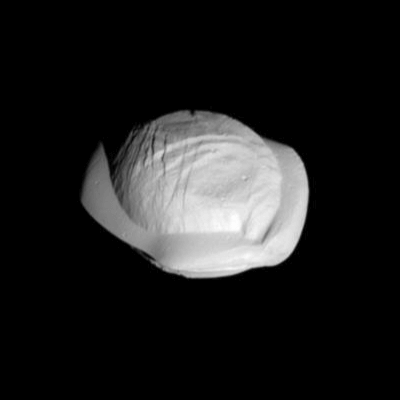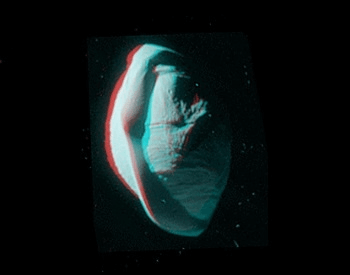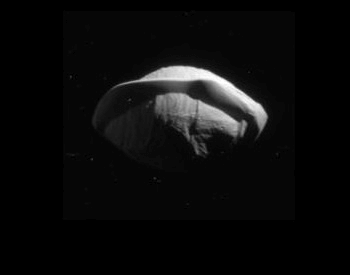
- Moon Name: Pan
- Designation: Saturn XVIII
- Date Discovered: July 16th, 1990
- Discovered by: Mark R. Showalter (Voyager 2)
- Average Orbit of Saturn: 83,002 miles
- Total Mass: 5,451,597,244,923 tons
- Surface Area: 964.60 square miles
14 Pan Facts for Kids
- Pan is one of Saturn’s 82 known moons (natural satellites).
- Pan is named after a Greek mythology god.
- Pan is also designated as Saturn XVIII.
- Pan was discovered on July 16th, 1990, by Mark R. Showalter using old photographs taken by Voyager 2.
- Mark R. Showalter discovered Pan using photographs from Voyager than were almost 20 years old.
- The average orbit distance for Pan is 83,002 mi.
- The diameter of the moon Pan is 17.523 mi.
- The surface area of the moon Pan is 964.60 mi2.
- It takes Pan less than 14 hours to complete an orbit around Saturn.
- Pan is the closest moon to Saturn that has been named.
- Pan is one of Saturn’s Shepperd moons and keeps the Encke Gap in A ring clear.
- The Encke Gap created by Pan in A ring is over 201 mi wide.
- Pan is known for its striking walnut like shape that resembles a ravioli.
- Pan has been photographed by the Voyager 2 and Cassini spacecrafts.
Pictures of Saturn’s Moon Pan

A photo of the the moon Pan in the Encke Gap.Credit: NASA

A anaglyph photo (stereoscopic) of the moon Pan.Credit: NASA

A photo of the southern hemisphere of the moon Pan.Credit: NASA
Additional Resources on Saturn’s Moon Pan
- In Depth View of Pan – Discover Saturn’s moon Pan on the NASA Science Solar System Exploration website.
- Pan Moon Data – Compare the moon Pan and our planet Earth on the NASA Science Solar System Exploration website.
- Pan Moon Pictures – View photos of the moon Pan taken my NASA spacecrafts on the JPL Photojournal website.
- Pan (Moon) – Wikipedia – Learn more about the Saturn’s moon Pan on the Wikipedia website.
